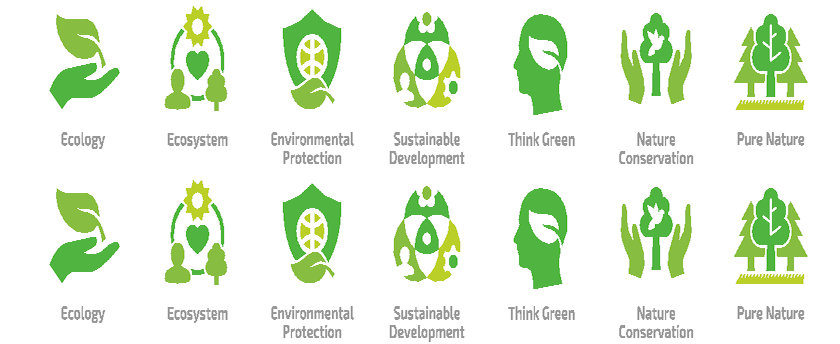
Conservation Tips
Water
Soil
Water Conservation
Check household faucets for leaks. A faucet with even a slow drip takes 10 to 25 gallons of water. Just think, 15 drips per minute add up to almost 3 gallons of water wasted per day, 65 gallons wasted per month, and 788 gallons wasted per year!
Keep showers to 5 minutes or less in length. A five-minute shower takes 10 to 25 gallons of water. Keep a pitcher of water in the refrigerator. Then you won't have to run tap water to cool it. Use a broom to sweep your driveway, garage, or sidewalk instead of using water. Use a bucket of water to wash your bike or the family car and rinse quickly with a hose. Water your lawn in the evening or in the early morning to avoid evaporation. Be careful to water only the lawn and not the sidewalk or street.
Use water only when you need it. Don't leave water running; be sure to turn it off when you are finished. Water conservation can be defined as: Any beneficial reduction in water loss, use or waste as well as the preservation of water quality.A reduction in water use accomplished by implementation of water conservation or water efficiency measures; or,•Improved water management practices that reduce or enhance the beneficial use of water. A water conservation measure is an action, behavioral change, device, technology, or improved design or process implemented to reduce water loss, waste, or use. Water efficiency is a tool of water conservation. That results in more efficient water use and thus reduces water demand. The value and cost-effectiveness of a water efficiency measure must be evaluated in relation to its effects on the use and cost of other natural resources (e.g. energy or chemicals).
Water Efficiency
Goals
The goals of water conservation efforts include as follows:
- • Sustainability. To ensure availability for future generations, the withdrawal of fresh water from an ecosystem should not exceed its natural replacement rate.
- • Energy conservation. Water pumping, delivery, and wastewater treatment facilities consume a significant amount of energy. In some regions of the world over 15% of total electricity consumption is devoted to water management. Habitat conservation. Minimizing human water use helps to preserve fresh water habitats for local wildlife and migrating waterfowl, as well as reducing the need to build new dams and other water diversion infrastructure.
Soil Conservation
Soil conservation is a set of management strategies for prevention of soil being eroded from the Earth's surface or becoming chemically altered by overuse, acidification, salinization or other chemical soil contamination. It is a component of environmental soil science.
Crops and ConservationErosion barriers on disturbed slope, Marin County, California Decisions regarding appropriate crop rotation, cover crops, and planted windbreaks are central to the ability of surface soils to retain their integrity, both with respect to erosive forces and chemical change from nutrient depletion. Crop rotation is simply the conventional alternation of crops on a given field, so that nutrient depletion is avoided from repetitive chemical uptake/deposition of single crop growth.
Cover crops serve the function of protecting the soil from erosion, weed establishment or excess evapotranspiration; however, they may also serve vital soil chemistry functions. For example, legumes can be ploughed under to augment soil nitrates, and other plants have the ability to metabolize soil contaminants or alter adverse pH. The cover crop Mucuna pruriens (velvet bean) has been used in Nigeria to increase phosphorus availability after application of rock phosphate. Some of these same precepts are applicable to urban landscaping, especially with respect to ground-cover selection for erosion control and weed suppression. soil is one of the three main natural resources alongside with water and air.
Windbreaks
Windbreaks are created by planting sufficiently dense rows or stands of trees at the windward exposure of an agricultural field subject to wind erosion.[3] Evergreen species are preferred to achieve year-round protection; however, as long as foliage is present in the seasons of bare soil surfaces, the effect of deciduous trees may also be adequate.
Erosion prevention
Contour plowing, Pennsylvania 1938. The rows formed slow water run-off during rainstorms to prevent soil erosion and allows the water time to settle into the soil.
Practices
There are also conventional practices that farmers have invoked for centuries. These fall into two main categories: contour farming and terracing, standard methods recommended by the U.S. Natural Resources Conservation Service , whose Code 330 is the common standard. Contour farming was practiced by the ancient Phoenicians, and is known to be effective for slopes between two and ten percent. Contour plowing can increase crop yields from 10 to 50 percent, partially as a result from greater soil retention.
There are many erosion control methods that can be used such as conservation tillage systems and crop rotation.
Keyline design is an enhancement of contour farming, where the total watershed properties are taken into account in forming the contour lines. Terracing is the practice of creating benches or nearly level layers on a hillside setting. Terraced farming is more common on small farms and in underdeveloped countries, since mechanized equipment is difficult to deploy in this setting.
Human overpopulation is leading to destruction of tropical forests due to widening practices of slash-and-burn and other methods of subsistence farming necessitated by famines in lesser developed countries. A sequel to the deforestation is typically large scale erosion, loss of soil nutrients and sometimes total desertification.
Perimeter runoff control
Trees, shrubs and groundcovers are also effective perimeter treatment for soil erosion prevention, by insuring any surface flows are impeded. A special form of this perimeter or inter-row treatment is the use of a "grassway" that both channels and dissipates runoff through surface friction, impeding surface runoff, and encouraging infiltration of the slowed surface water.



